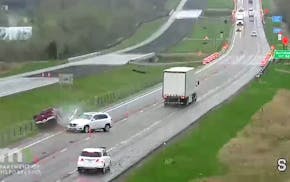Lost dog?
Now facial-recognition technology is being used to find lost pets.
Rather than tack up posters in the neighborhood to search for Spot, pet owners can use a free smartphone app that uses facial-recognition technology to help find their pets. And last week, the Animal Humane Society in the Twin Cities began adding photos of the strays they take in to the Finding Rover app's database.
Lest cat owners feel left out, the app for feline pets is expected to be available in August.
"It's another tool to get the pet back quicker," said Dr. Graham Brayshaw, animal services director for the Humane Society in the Twin Cities. Lost dogs often are found without dog collars or ID tags. And although some dogs have an embedded microchip that identifies them and their owner, usually only shelters and veterinarian offices have scanners that can read the chips.
The smartphone app puts the lost-dog search in the palm of a hand. (Or, for those without a smartphone, the search can be done on a computer by going to findingrover.com.)
It works like this: Dog owners use the app to take a photo of the pooch's mug and then upload it and enter the owner's ZIP code. The dog's face becomes part of a database in case the pup goes missing. The finder of a lost pup would use the app to take a photo of the dog's face. A "bark button" that releases the sound of a squealing puppy catches the dog's attention for a moment, making it possible to get a better straight-on headshot.
Once a dog is reported missing or found, the software uses the facial recognition and location to help identify possible matches. The search radius can be expanded from 5 miles to more than 2,000, according to the Finding Rover website. "Lost Dog" and "Found Dog" digital posters appear on an interactive map, allowing users to see in real time where dogs have been found or lost.
John Polimeno, who lives in the Berkeley, Calif. area, said he came up with the idea for the app when he noticed a "lost dog" poster while sitting in a coffee shop. It brought back the memory of driving all over town searching for his missing black Labrador while his kids sat in the back seat crying.
He wondered out loud: "If they can identify people using facial recognition, wouldn't it be cool if you could identify an animal?"
He hooked up with software developers at the University of Utah, who developed algorithms to differentiate a dog from other dogs and cats from other cats by focusing on more than 125 spots around the face.
Polimeno said the program is 98 percent accurate with dogs and 99 percent accurate with cats.
In the 1½ years since the app became available, more than 100,000 people have registered dogs, and 91 shelters across the country and in Australia have joined in.
"The Animal Humane Society here will send us photos of all their animals on an hourly basis," Polimeno said. "So now when someone loses their pet, instead of having to drive to every shelter and walk every kennel, now all you do is search Finding Rover."
So far, more than 620 dogs have been reunited with their owners, Polimeno said.
"We do everything with our cellphones," he said. "Now you can save an animal by taking a picture."
Mary Lynn Smith • 612-673-4788
Abortion bans made Minnesota a health care island. Could the same happen with IVF?

Minnesota authorities call spike in distracted driving 'disturbing' and 'unacceptable'
Kaleena Burkes is head of Minnesota's new Office of Missing and Murdered Black Women and Girls
Two teens wounded, one seriously, in north Minneapolis shooting
